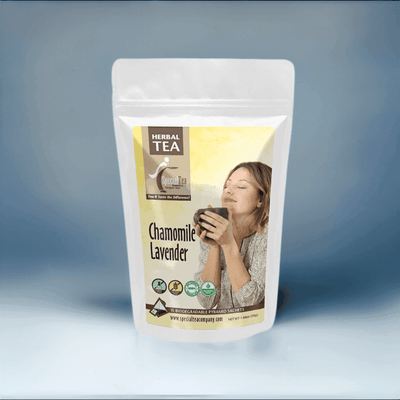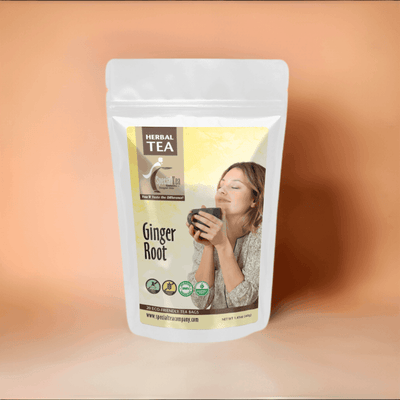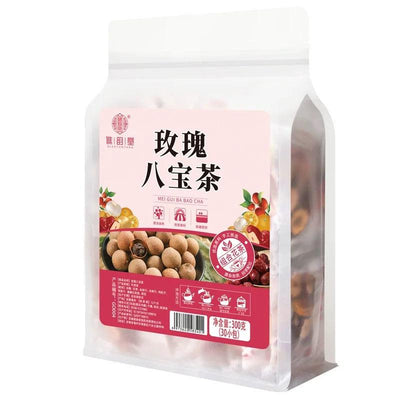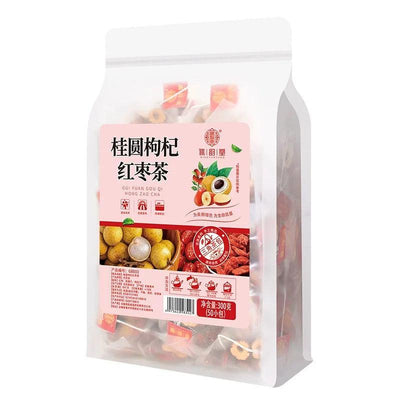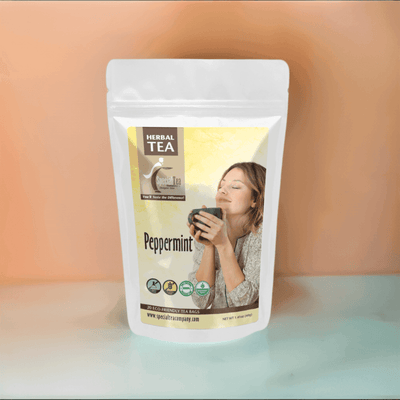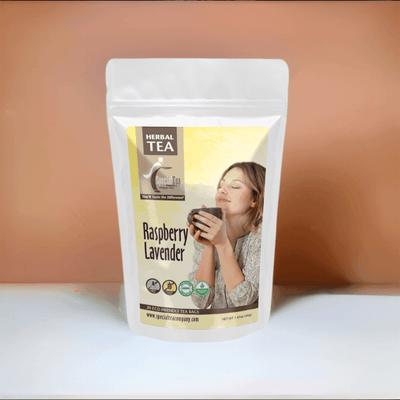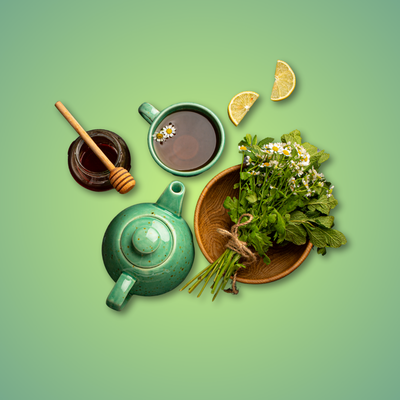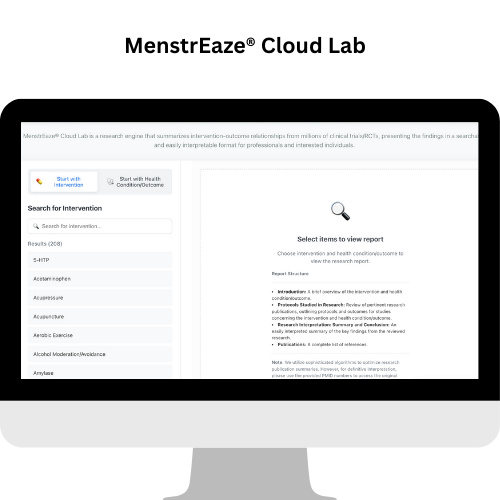Cramps, those sudden and often intense muscle contractions, are a common experience that can significantly disrupt daily life. Whether it's the monthly discomfort of menstrual cramps, the sharp pain of a muscle spasm after exercise, or the unsettling sensation of digestive cramps, these involuntary contractions can range from a mild annoyance to a debilitating agony [1]. In the pursuit of relief, many individuals are increasingly drawn to natural and home-based remedies, seeking gentler yet effective ways to manage these discomforts. Among these natural solutions, tea stands out as a time-honored and readily accessible option. This exploration delves into the potential of various teas to alleviate different types of cramps, examining the traditional uses and the scientific understanding of the active compounds that may contribute to their soothing effects. By understanding the nuances of different cramps and the specific properties of various teas, individuals can make informed choices to find natural relief.
Decoding the Discomfort: Understanding Different Types of Cramps
To effectively address cramps with tea, it is essential to first understand the different types of cramps that can affect the body. These can broadly be categorized into menstrual cramps, muscle cramps, and digestive cramps.
Menstrual Cramps (Dysmenorrhea): The term dysmenorrhea refers to the severe and frequent cramps and pain experienced during a woman's menstrual period [5]. This pain arises from contractions of the uterus as it works to shed its lining. Dysmenorrhea is further classified into two types: primary and secondary.
- Primary Dysmenorrhea: This type of period pain is not caused by another underlying medical condition and often begins when a woman first starts menstruating, continuing throughout her life [3]. The primary cause of this pain is attributed to abnormal contractions of the uterus resulting from a chemical imbalance in the body, specifically an overproduction of prostaglandins. These hormone-like substances control the contractions of the uterus, and elevated levels can lead to more intense and painful contractions [3]. The symptoms of primary dysmenorrhea can include cramping and pain in the lower abdomen, low back pain, pain radiating down the legs, nausea, vomiting, diarrhea, fatigue, and headaches [5].
- Secondary Dysmenorrhea: Unlike primary dysmenorrhea, secondary dysmenorrhea is caused by an identifiable physical condition affecting the reproductive organs and usually starts later in life [3]. Several medical conditions can lead to secondary dysmenorrhea, with endometriosis being the most common. Endometriosis is a condition where tissue similar to the lining of the uterus grows outside the uterus, often causing internal bleeding, infection, and pelvic pain [5]. Other potential causes of secondary dysmenorrhea include pelvic inflammatory disease (PID), uterine fibroids (non-cancerous growths in the uterus), abnormal pregnancies (such as miscarriage or ectopic pregnancy), infections, tumors, polyps in the pelvic cavity, adenomyosis (where the uterine lining grows into the uterine muscle), cervical stenosis (narrowing of the cervix), and the use of intrauterine devices (IUDs) [5]. Symptoms that might suggest secondary dysmenorrhea include pain that starts before menstruation begins or persists after it ends, progressively worsening pain, irregular periods, pain experienced outside of the menstrual period, heavy periods, unusual vaginal discharge, and painful sexual intercourse [7]. Recognizing the distinction between primary and secondary dysmenorrhea is important, as secondary dysmenorrhea may signal an underlying health issue that requires medical evaluation and specific treatment [5].
Muscle Cramps: Muscle spasms, also known as muscle cramps, are characterized by painful contractions and tightening of the muscles. These are common, involuntary, and often unpredictable occurrences [1]. While the terms are often used interchangeably, a cramp is more narrowly defined as a sustained and painful involuntary muscle contraction [9]. Muscle cramps can affect any part of the body, with some of the most common types including nocturnal leg cramps (occurring at night), exercise-associated muscle cramps (EAMC), back spasms, arm spasms, neck spasms, chest cramps, abdomen cramps, and ribcage spasms [1]. Restless Leg Syndrome (RLS), while not strictly a muscle cramp, shares some similarities and can significantly impact quality of life [2]. The causes and triggers of muscle cramps are varied and can include dehydration, electrolyte imbalances (such as deficiencies in potassium, magnesium, and calcium), muscle fatigue, insufficient stretching, exercising in extreme heat, stress, overexertion, prolonged periods of sitting or standing, and certain medications like diuretics and statins [1]. Additionally, underlying neurological or metabolic conditions can sometimes manifest as muscle cramps [1]. Specific risk factors for nocturnal leg cramps include advanced age, pregnancy, and certain medical conditions such as peripheral artery disease and diabetes [2]. The diverse nature of muscle cramps suggests that different approaches, including the use of specific teas, might be beneficial depending on the underlying cause.
Digestive Cramps: Digestive cramps are characterized by pain in the abdomen, often described as cramp-like, and can vary in intensity from mild to severe [1]. These cramps are frequently associated with issues within the gastrointestinal tract. Common causes of digestive cramps include gas and bloating, irritable bowel syndrome (IBS), food intolerances such as lactose intolerance, food poisoning, stomach flu (viral gastroenteritis), constipation, and inflammatory bowel diseases like Crohn's disease and ulcerative colitis [4]. In some instances, digestive cramps can also be a symptom of more serious underlying conditions such as appendicitis or gallstones [4]. Notably, severe menstrual cramps can also manifest as lower abdominal pain that may feel like digestive cramps [4]. The pain associated with digestive cramps is often described as cramp-like and can be due to gas and bloating, sometimes followed by diarrhea [4]. Other symptoms that may accompany digestive cramps include bloating, belching, changes in bowel habits (such as diarrhea or constipation), nausea, vomiting, and heartburn [12]. Given the range of potential causes for digestive cramps, teas that possess properties to soothe the digestive tract, reduce inflammation, and alleviate gas may offer relief.
Brewing Relief: Teas for Menstrual Cramps
For centuries, various cultures have turned to herbal teas to ease the discomfort associated with menstruation. Several teas have gained recognition for their potential to alleviate menstrual cramps.
- Red Raspberry Leaf Tea: This tea, derived from the leaves of the raspberry plant, has a long history of traditional use for women's health. It is believed to act as a muscle relaxer, potentially easing the uterine contractions that cause menstrual cramps and possibly reducing excessive bleeding [16]. Some also suggest that it may help to tone the uterus [18]. These benefits are attributed to its rich content of tannins and anti-inflammatory compounds [16]. Additionally, it contains an alkaloid called fragarine, which may contribute to pelvic muscle health [20]. To prepare red raspberry leaf tea, one teaspoon of crushed or dried leaves should be steeped in a cup of boiling water for at least five minutes [17]. Tea bags are also a convenient option. The suggested dosage is up to one cup orally six times a day, using 1.5 grams of leaves per 150 mL of water [21]. Some recommend drinking this tea regularly in the weeks leading up to menstruation [19]. While traditionally used, it is important to note that scientific evidence supporting these benefits is limited and sometimes conflicting [18]. Furthermore, red raspberry leaf tea may not be suitable for everyone. It is possibly safe in late pregnancy under the direct supervision of a healthcare provider but likely unsafe earlier in pregnancy due to its potential estrogen-like effects [22]. Individuals with hormone-sensitive conditions such as breast cancer, endometriosis, or uterine fibroids should avoid it [22]. It may also interact with insulin and medications that slow blood clotting [22].
- Chamomile Tea: Renowned for its soothing properties, chamomile tea may extend its calming benefits to the relief of menstrual cramps. It is thought to help relieve muscle spasms, reduce menstrual bleeding and cramping, and alleviate stress and anxiety often associated with menstruation [16]. These effects are likely due to the presence of glycine, an amino acid shown to relieve muscle spasms [16]. Chamomile is also rich in apigenin, a compound known for its relaxing and soothing effects [24]. The plant contains volatile oils, terpenoids, and flavonoids, which contribute to its anti-inflammatory and antispasmodic properties [28]. To prepare chamomile tea, steep a tea bag or 2-3 heaping teaspoons (2 to 4 g) of dried herb in about 8 ounces of hot water for 5-10 minutes, keeping the mug covered [29]. The suggested dosage is to drink this tea 3 to 4 times per day between meals [30]. Some studies have used 250 mg of chamomile taken three times daily in capsule form [18]. While generally considered safe, potential side effects include allergic reactions in individuals allergic to ragweed, daisies, marigolds, or chrysanthemums [28]. Chamomile may also have mild blood-thinning effects, so caution is advised for those taking blood thinners like warfarin or before undergoing surgery [28]. It is generally recommended to avoid chamomile during pregnancy [28]. It may also interact with sedatives, antiplatelet drugs, antidepressants, anti-seizure medications, aspirin, benzodiazepines, and nonsteroidal anti-inflammatory drugs (NSAIDs) [29].
- Ginger Tea: Often cited as one of the best teas for menstrual cramps, ginger tea is high in anti-inflammatory properties that may help to ease swelling, cramping, and pain associated with menstruation. Some clinical research suggests that ginger may be as effective as over-the-counter medications in reducing menstrual cramping [16]. Additionally, ginger tea is well-regarded for its anti-nausea benefits, making it a particularly good choice for individuals who experience stomach upset during their periods [16]. These benefits are attributed to its rich content of phenolic compounds like gingerole, zingerone, and chogaol, which have anti-inflammatory and analgesic effects [24]. Ginger also contains gingerols, shogaol, and other compounds with anti-inflammatory, antioxidant, and antiemetic properties [24]. To prepare ginger tea, simmer about 2 inches of peeled and thinly sliced ginger root in 2 cups of water for approximately 10 minutes [38]. Grated or powdered ginger can also be used [24]. The suggested dosage is to drink one cup at a time, warm, once to twice per day [39]. Clinical studies have found that consuming 750–2,000 mg of ginger powder during the first 3–4 days of menstruation can help reduce period pain [18]. Another study noted that taking 200 mg of ginger every 6 hours was as effective as a combination pain medication [18]. While generally safe in moderate amounts (up to 5 grams per day), high doses of ginger may cause mild heartburn, diarrhea, and irritation of the mouth [40]. Ginger may also increase the tendency for bleeding, so caution is advised for individuals taking blood thinners like warfarin or aspirin [24]. Individuals with gallstones, diabetes, or high blood pressure should consult a healthcare provider before regularly consuming ginger tea [40].
- Mint Tea (Peppermint & Spearmint): Both spearmint and peppermint teas may offer relief from painful periods. These teas contain compounds with antispasmodic properties, which may help to ease painful menstrual cramping and stomach upset [16]. Spearmint tea has also been studied for its potential to balance hormones and manage symptoms associated with polycystic ovary syndrome (PCOS), including severe period cramps [16]. Peppermint tea contains menthol and menthone, substances with antispasmodic, anti-inflammatory, analgesic, and soothing properties that can help to relieve menstrual cramps [24]. Menthol is also thought to relax the uterine muscles [19]. To prepare mint tea, boil two cups of water, remove from heat, and add a handful of torn or chopped mint leaves. Cover and steep for five minutes before straining and drinking [43]. For peppermint tea specifically, boil water, remove from heat, add 2 teaspoons of fresh peppermint leaves, cover, let steep for a few minutes, and then strain [24]. The suggested dosage for peppermint tea is one cup, 2 to 4 times per day [24]. While generally safe, peppermint can worsen acid reflux (GERD) [43]. It may also interact with certain medications, including cyclosporine, drugs metabolized by the liver, and drugs that reduce stomach acid. Some studies suggest peppermint might lower blood sugar and blood pressure, so caution is advised for those taking related medications. Peppermint is generally not recommended for infants or small children due to potential breathing problems associated with peppermint oil [44]. Large amounts of spearmint during pregnancy might be unsafe [45].
- Green Tea: Green tea, derived from the Camellia sinensis plant, is rich in antioxidant and anti-inflammatory compounds, which may help to ease painful menstrual cramping, headaches, and other symptoms [16]. It is also high in L-theanine, an amino acid that may help to elevate mood and cognitive function while lowering stress [16]. Some suggest it may also improve blood flow and reduce bloating [26]. The active compounds include catechins, known for their antioxidant and anti-inflammatory effects, and L-theanine [16]. To prepare green tea, add one teaspoon of leaves or one tea bag to a cup of boiling water and allow it to steep for 10 minutes before straining [24]. It can be consumed 3 to 4 times per day, or as directed by a healthcare provider [24]. Individuals sensitive to caffeine may want to opt for low or no caffeine varieties [25]. Potential side effects include caffeine-related issues such as agitation, anxiety, and insomnia [48]. High concentrations of green tea extract have been rarely linked to liver issues [49]. Green tea may also interact with certain medications like nadolol and raloxifene [50]. It is generally not recommended for adolescents or breastfeeding women, or for individuals with a history of insomnia, hyperthyroidism, gastritis, or hypertension [24].
- Other Potentially Beneficial Teas: Beyond these common options, several other teas may offer relief from menstrual cramps. Fennel tea contains anethole, which is believed to relieve spasms and has shown in some studies to reduce pain intensity as effectively as conventional drugs [19]. A typical preparation involves steeping 1-2 grams of crushed seeds in 150 mL of boiling water [53], with a suggested dosage of 1-2 cups per day [24]. Caution is advised for pregnant or breastfeeding women and those with allergies to celery, carrots, or mugwort [24]. Fennel may also interact with certain antibiotics and medications metabolized by the liver [54]. Cinnamon tea contains eugenol and linalool, which have analgesic properties and may improve blood circulation and reduce inflammation, potentially alleviating menstrual pain [19]. Prepare it by boiling a cinnamon stick in water for five minutes [58], and drink twice a day [59]. Excessive consumption may cause mouth irritation, low blood sugar, and interact with medications for diabetes, heart conditions, and liver disease due to its coumarin content [60]. Lavender tea, known for its relaxing and antispasmodic properties, may provide relief from period cramps, with linalool and linalyl acetate being key active compounds [19]. Steep dried buds in hot water for five minutes [64] and drink up to three times per day [24]. It may cause drowsiness and should be avoided during pregnancy and breastfeeding [66]. Lavender may also interact with sedatives [66]. Nettle tea, rich in vitamins and minerals like magnesium and iron, may alleviate fatigue and muscle cramps associated with menstruation and potentially reduce heavy bleeding [19]. Prepare it by steeping 1 tablespoon of fresh or 1 teaspoon of dried nettle in 10 ounces of boiling water for 5-10 minutes [70]. The suggested dosage is one cup three times a day [70]. Potential side effects include mild stomach upset, fluid retention, and sweating [71]. It should be avoided during pregnancy and may interact with blood thinners, medications for high blood pressure and diabetes, diuretics, and lithium [71]. Finally, cramp bark tea has a long history of traditional use for relieving muscle cramps and spasms and is believed to have an antispasmodic effect on the uterus due to compounds like valerenic acid, salicoside, and scopoletin [26]. Steep 1-2 teaspoons of dried bark in hot water for 10-15 minutes [75]. A common dosage for a tincture is 1-5 ml in water up to three times a day [76]. It should be avoided during pregnancy and breastfeeding unless prescribed by a qualified herbalist [76]. Caution is advised for individuals with aspirin sensitivity, and large doses may cause nausea [77]. It may also interact with aspirin, NSAIDs, and blood thinners [78].
Easing Tension: Teas for Muscle Cramps
Several teas can be beneficial in easing the discomfort of muscle cramps, often by targeting inflammation, promoting relaxation, or addressing potential electrolyte imbalances.
- Ginger Tea: As previously discussed, ginger tea's anti-inflammatory and analgesic properties make it relevant for muscle soreness, especially after exercise. Research indicates that regular ginger consumption can reduce muscle soreness caused by exercise [37]. The preparation, dosage, active compounds, and side effects are consistent with those described for menstrual cramps [26].
- Turmeric Tea: This vibrant tea boasts anti-inflammatory, antioxidant, and pain-relieving properties, making it a potential aid for muscle cramps, including delayed onset muscle soreness (DOMS) [37]. Curcumin is the primary active compound responsible for these effects [37]. To prepare turmeric tea, allow ground turmeric powder to diffuse in boiling water for about five minutes, then strain. Adding ingredients like lemon, honey, ginger, or orange can enhance the flavor [37]. While a specific dosage for muscle cramps isn't detailed in the provided snippets, it is generally safe in small to moderate amounts. High doses might cause stomach upset [37].
- Green Tea: The anti-inflammatory and antioxidant properties of green tea can also contribute to muscle recovery after exercise [26]. Additionally, the theanine present in green tea may have a relaxing effect on muscles, which can be particularly helpful during times of stress when muscle tension is common [37]. The preparation, dosage, active compounds, and side effects are consistent with those described for menstrual cramps.
- Peppermint Tea: The muscle-relaxing properties of peppermint tea can help to ease tension and potentially alleviate muscle cramps [26]. The menthol content provides a mild cooling effect, which can be soothing for sore muscles and promote relaxation [46]. The preparation, dosage, active compounds, and side effects are consistent with those described for menstrual cramps.
Soothing the Gut: Teas for Digestive Cramps
Several teas possess properties that can help to soothe the digestive system and alleviate digestive cramps.
- Peppermint Tea: The antispasmodic effects of menthol in peppermint tea make it a valuable remedy for digestive cramps. It can help to relax the muscles of the digestive tract, relieving gas, bloating, and cramps [33]. The preparation, dosage, active compounds, and side effects are consistent with those described for menstrual cramps.
- Ginger Tea: Ginger's ability to reduce inflammation in the digestive tract and ease discomfort can be beneficial for digestive cramps. Gingerol, a key active compound, is thought to be responsible for these stomach-soothing effects, potentially helping with indigestion and bloating [33]. The preparation, dosage, active compounds, and side effects are consistent with those described for menstrual cramps.
- Chamomile Tea: By relaxing the muscles in the digestive tract, chamomile tea can help the body to expel gas, leading to less bloating and cramping. It may also relieve pain associated with various digestive disorders [33]. The preparation, dosage, active compounds, and side effects are consistent with those described for menstrual cramps.
- Fennel Tea: The anethole in fennel seeds is known to relax the smooth muscles in the gastrointestinal tract, which can be helpful for individuals experiencing gas, bloating, and stomach cramps [19]. The preparation, dosage, active compounds, and side effects are consistent with those described for menstrual cramps.
- Other Potentially Beneficial Teas: Several other teas may offer relief from digestive cramps. Black tea, rich in tannins, may promote good digestion and could be effective for stomach aches and heavy digestion [34]. The theine (caffeine) it contains has a mild laxative effect [86]. Prepare it by steeping one teaspoon of leaves or one tea bag in a cup of boiling water for five minutes [88], and drink 2-3 cups per day [82]. Be mindful of its caffeine content [88]. Lemon balm tea may help to treat indigestion, and its constituent eugenol can calm muscle spasms [32]. Steep 1.5 to 4.5 grams of leaves in 150 mL of hot water [93] and drink several times a day [93]. Boldo tea has been traditionally used for poor digestion and intestinal colic, and it may help to tame intestinal gas. It stimulates bile production and has mild laxative and calming functions [82]. Steep 1 tablespoon of leaves per 150 mL of boiled water for 5-10 minutes [99] and drink one cup when needed, not daily [100]. Exercise caution due to potential liver toxicity and contraindications [100]. Bay leaf tea possesses anti-inflammatory and antispasmodic actions that may help to relieve stomach cramps. Its astringent properties may also be useful for treating diarrhea [82]. Steep one dried bay leaf in a cup of boiling water for 10 minutes [82] and drink up to four cups per day [82]. Note that whole bay leaves should not be ingested [106].
The Art of Brewing: Preparing Your Tea for Cramp Relief
To maximize the potential benefits of tea for cramp relief, proper brewing is essential. Here are some general guidelines:
- Always use fresh, filtered water for the best taste and purity.
- Heat the water to the appropriate temperature. For most herbal teas, boiling water is recommended to effectively extract the beneficial compounds. Green tea, however, is best brewed with slightly cooler water, around 175°F (80°C), to prevent a bitter taste.
- Allow the tea to steep for the recommended time. Herbal teas generally require a steeping time of 5-10 minutes to fully release their therapeutic properties, while green tea typically needs only 2-3 minutes. Refer to the specific preparation instructions for each tea in the preceding sections.
- Cover your cup or teapot while the tea is steeping. This helps to retain the volatile oils, which often contain the most potent medicinal compounds.
For specific recommendations on how to prepare each tea mentioned for menstrual, muscle, and digestive cramps, please refer back to the detailed instructions provided in Sections 3 and 5.
Regarding dosage and frequency, it is generally advisable to start with one cup of tea and observe how your body responds. Most herbal teas can be consumed 2-4 times per day, but it's important to pay attention to the specific dosage recommendations outlined for each tea in Sections 3 and 5. Consider the timing of your tea consumption as well. For instance, drinking certain teas a few days before the start of your period might offer preventative benefits for menstrual cramps. For digestive cramps, sipping tea slowly after meals or when you begin to feel discomfort can be helpful. For muscle cramps, try drinking tea after exercise or as soon as a cramp occurs.
Important Notes: Potential Side Effects, Contraindications, and Interactions
While tea offers a natural approach to managing cramps, it's important to be aware of potential side effects, contraindications, and interactions. Individual responses to teas can vary, and some people may experience sensitivities or allergic reactions. For example, individuals allergic to plants in the Asteraceae family, such as ragweed, may also be allergic to chamomile.
Several common contraindications should be considered. Pregnancy and breastfeeding often require caution with herbal remedies, and some teas, like red raspberry leaf tea in early pregnancy, boldo tea, and high amounts of spearmint, are best avoided. Allergies to related plants, as mentioned with chamomile, are also important to consider. Pre-existing health conditions, such as GERD (with peppermint), hormone-sensitive conditions, liver or kidney issues, and epilepsy, may also contraindicate the use of certain teas.
Furthermore, some teas can interact with medications. It is particularly important to be cautious about potential interactions with blood thinners (e.g., chamomile, ginger, turmeric, fennel, cramp bark), diabetes medications (e.g., green tea, peppermint, nettle, bay leaf, cinnamon), blood pressure medications (e.g., nettle, peppermint), sedatives (e.g., chamomile, lavender, lemon balm, bay leaf), and certain antibiotics like ciprofloxacin (with fennel).
To provide a quick reference, the following table summarizes the key teas discussed for each type of cramp, their primary active compounds, and notable side effects or contraindications:
|
Cramp Type |
Tea |
Primary Active Compounds |
Notable Side Effects/Contraindications |
|
Menstrual Cramps |
Red Raspberry Leaf |
Tannins, Anti-inflammatory compounds |
Avoid early pregnancy, caution with hormone-sensitive conditions, interacts with insulin/blood thinners. |
|
Chamomile |
Glycine, Apigenin, Flavonoids |
Potential allergies (ragweed family), may interact with blood thinners/sedatives, avoid during pregnancy. |
|
|
Ginger |
Gingerols |
High doses may cause heartburn/diarrhea, caution with blood thinners/gallstones. |
|
|
Mint (Peppermint/Spearmint) |
Menthol, Menthone |
Peppermint may worsen GERD, potential interactions with cyclosporine/liver-metabolized drugs, caution with blood sugar/pressure meds. Large spearmint amounts in pregnancy unsafe. |
|
|
Green |
Catechins, L-Theanine |
Caffeine content, potential liver issues (rare), interacts with some medications, avoid in certain conditions (insomnia, hyperthyroidism). |
|
|
Muscle Cramps |
Ginger |
Gingerols |
(Same as above) |
|
Turmeric |
Curcumin |
High doses may cause stomach upset, caution during pregnancy/breastfeeding (excessive). |
|
|
Green |
Catechins, L-Theanine |
(Same as above) |
|
|
Peppermint |
Menthol |
(Same as above) |
|
|
Digestive Cramps |
Peppermint |
Menthol |
(Same as above) |
|
Ginger |
Gingerols |
(Same as above) |
|
|
Chamomile |
Glycine, Apigenin, Flavonoids |
(Same as above) |
|
|
Fennel |
Anethole |
Caution in pregnancy/breastfeeding, allergies (celery family), interacts with some antibiotics/liver-metabolized drugs. |
|
|
Black |
Tannins, Theine |
Caffeine content, may reduce iron absorption. |
|
|
Lemon Balm |
Terpenes, Tannins, Eugenol |
May cause headache/dizziness, interacts with thyroid/HIV medications/sedatives. |
|
|
Boldo |
Boldine |
Potential liver toxicity, contraindicated in pregnancy/breastfeeding/gallbladder/kidney issues, interacts with blood thinners/heart meds. |
|
|
Bay Leaf |
Tannins, Flavonoids |
High amounts may cause sleepiness/GI issues, caution in pregnancy/breastfeeding/diabetes, interacts with sedatives/diabetes meds. (Note: Whole leaves are unsafe to ingest) |
Beyond the Cup: Complementary Natural Remedies and Lifestyle Tips
While tea can be a valuable tool for managing cramps, combining it with other natural remedies and lifestyle adjustments can often enhance its effectiveness.
For menstrual cramps, consider applying heat to the abdomen or lower back using heating pads or warm baths [108]. Gentle exercise like yoga or walking can also provide relief [108]. Massaging the abdomen with essential oils such as lavender, sage, rose, cinnamon, or clove, diluted in a carrier oil, may also help [108]. Making dietary adjustments, such as increasing the intake of omega-3 fatty acids, fruits, vegetables, nuts, lean proteins, and whole grains, while limiting processed foods, caffeine, alcohol, and salty foods, can be beneficial [69]. Staying well-hydrated is also important [109]. Over-the-counter pain relievers like NSAIDs can be used for more immediate relief [108], and some individuals find acupuncture or acupressure helpful [111]. Interestingly, some research suggests that achieving orgasm may also help to alleviate menstrual cramps [109].
For muscle cramps, stretching the affected muscle is often the first line of defense [1]. Massage can also help to relieve tension [113]. Applying heat or ice to the cramped area can provide soothing relief [113]. Ensuring adequate hydration, especially with electrolyte-rich drinks, is crucial [113]. Incorporating electrolyte-rich foods like bananas, sweet potatoes, avocados, and leafy greens into your diet can also be beneficial [114]. Limiting caffeine and tobacco may help to prevent cramps [113]. Some individuals find relief from nonprescription remedies like drinking small amounts of pickle juice [114]. Maintaining sufficient levels of vitamins D and B, as well as minerals like calcium and magnesium, through diet or supplements (after consulting a doctor) may also play a role in preventing muscle cramps [1].
For digestive cramps, staying well-hydrated is essential [117]. Avoiding lying down immediately after eating can help to prevent indigestion and related cramps [117]. Applying a heating pad to the abdomen can relax stomach muscles [118]. Following a bland diet, such as the BRAT diet (bananas, rice, applesauce, toast) for diarrhea-related cramps, can be helpful [117]. Identifying and avoiding trigger foods, such as high FODMAP foods, fatty or fried foods, and dairy if lactose intolerant, can also reduce digestive discomfort [117]. Eating smaller, more frequent meals may be easier on the digestive system [120]. Increasing fiber intake can help with constipation-related cramps [118]. Gentle exercise may also aid digestion [118]. Some individuals find relief from probiotics, such as those found in yogurt [121], and over-the-counter remedies like antacids or simethicone can help with specific symptoms [118].
Conclusion: Embracing Tea as a Gentle Aid for Cramp Relief
The world of herbal teas offers a diverse array of potential remedies for the common discomfort of cramps. From the soothing comfort of chamomile for menstrual pain to the anti-inflammatory power of ginger for muscle soreness and the digestive calming effects of peppermint, various teas contain active compounds that may gently aid the body in finding relief. By understanding the specific types of cramps and the unique properties of different teas, individuals can explore these natural options to find what works best for their individual needs.
It is important to remember that while tea can be a helpful and supportive natural remedy, listening to your body is paramount. If cramps are persistent, severe, or accompanied by other concerning symptoms, consulting a healthcare professional is essential to rule out any underlying medical conditions. However, for many common occurrences of menstrual, muscle, and digestive cramps, exploring the gentle and supportive world of herbal teas can be a comforting and potentially effective approach to finding natural relief and improving overall well-being.



